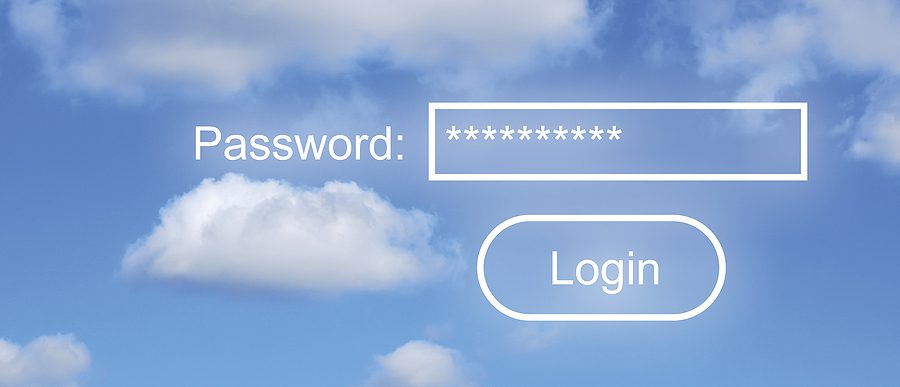
Regardless if your company is large or small, today’s businesses operate around data. That’s why protecting your data is equally as important as protecting your employees, facilities, and other assets. It can take a lot of time and resources to recover from data loss. With that in mind, small businesses are especially at risk and can greatly benefit from effective backup strategies to help prevent catastrophic data loss.
Small businesses should take the time to decide how they will protect their data, and then create a strategy and prioritize putting the plan into place. The specific strategy, steps, and practice will vary based on your industry and business details, but following best practices can help create a solid small business backup strategy to build upon.
Why Is a Small Business Backup Strategy Important?
Data loss can devastate any business, but significant loss has potential to lead to a small company shutting down. A backup strategy can help small businesses prevent data loss, and might even help restore data if loss occurs. Here are some critical reasons why a backup strategy should be a priority for small businesses:
- Data loss can occur from human error, hardware failures, or software issues. A backup strategy helps protect against data loss.
- Data privacy regulations apply to businesses of all kinds. A backup strategy helps maintain regulatory compliance and helps your business avoid penalties and fines.
- Data is inherently vulnerable to ransomware and cyberattacks. A backup strategy is a helpful tool in the defense against cyber threats.
- Natural disasters can cause data loss. A backup strategy helps recover data in the event of a flood, fire, or other natural disaster.
Steps to Build an Effective Backup Strategy
When developing a data backup strategy for your small business, make sure it’s tailored to meet the needs of your company. The following steps can help guide the development of your backup strategy, but feel free to adjust as you see fit.
Step 1: Assess Risk Levels
The first step in creating a small business backup strategy is to closely analyze your data. You’ll want to assess your risk level for different data loss events, evaluate how those events would affect your business, and indicate how quickly you would need to restore data to prevent damage to your company. Using a business impact analysis (BIA) can help provide a data-focused analysis and valuable insights into your data.
Step 2: Identify Important Data
The most important data is the information that allows your business to keep functioning. Determining the data that’s most important will help you decide on data backup and storage solutions. Once you’ve identified what’s most important, your plan should outline how to preserve that information first. Typically, the most important types of data include:
- Financial records
- Legal documents
- Customer information and orders
- Tax documents
- Intellectual property
- Asset inventories
- Operations data
- Sales and marketing materials
- Production information
- Personnel records
- Company communication records
Step 3: Align with a Business Continuity Plan
Data backups are more effective when created as part of an overall business continuity plan. A continuity plan specifies an emergency response plan and identifies the target time for restoring operational data when a data loss event occurs. Together, a continuity plan and backup strategy provide more recovery options so critical operations can continue with minimal interruption.
Step 4: Understand Your Compliance Requirements
Industry regulations specify which types of data need to be backed up and protected. Some industries are more regulated than others, but all backups should be encrypted and include edit logs to verify their integrity. Make sure you’re familiar with and adhering to the specific record retention periods that apply to your business.
Step 5: Backup Data Frequently
The more often your data is backed up, the less data you’ll lose in between recovery points. You can automate backups to ensure that your data is being saved regularly and consistently. Consider your business’s data generation rate and operational needs to determine how frequently backups should occur. If your business uses different kinds of servers, some may need backups more frequently than others.
Step 6: Select Strategies, Solutions, & Tools
Having the proper backup strategies, solutions, and tools in place will help make restoration a shorter and easier process. Many companies use a combination of these three backup strategies:
- Full backup: A full backup makes a complete copy of the designated data when backing it up. This method preserves all data, but also uses extensive storage space and resources. Full backups should be performed regularly, but might not make sense to perform frequently.
- Incremental backup: An incremental backup only backs up data that’s changed since the last backup was completed. It’s the fastest backup strategy and requires less storage space. However, if used for restoration, this method can be slow and unreliable.
- Differential backup: A differential backup copies every change made since the last full backup was completed. This method has a faster restoration rate than an incremental backup, but it requires less storage than a full backup.
Every business should also consider on-site and off-site backups. When used together, the different options help ensure your data is restorable if needed. It’s best to use a combination of the following:
- On-site backup: Data can be backed up on-site using physical storage media. You’ll be responsible for protecting the media and the data it contains, giving you control over security and access.
- Off-site backup: Document storage and tape or microfilm storage are available off-site for archival data storage. Data security and preservation experts house your data safely in protected vaults and storage facilities.
- Cloud backup: Cloud-based backup services save your data to a server located in an off-site location. Cloud storage services use advanced security measures and enable seamless accessibility from multiple locations.
The best defense against data loss is prevention. Many data security tools exist today that are very effective in safeguarding valuable information. Encryption, firewalls, and access restrictions should always be in place. Employees who have access to data backups should be trained in data security, including how to stop phishing attempts and how to avoid suspicious downloads.
Step 7: Test & Validate Backups Regularly
Testing your backup systems helps ensure your team is prepared for disaster recovery if it’s needed. When possible, automate the testing process to validate each new backup. Keep a change and backup log to verify that data is being backed up according to schedule, and audit access records to make sure unauthorized changes haven’t been made.
Small Business Backup Strategy Best Practices
When it comes to your small business backup strategy, make sure your company adopts the following best practices in the process:
- Test & monitor regularly: To test and monitor your system, you’ll need to simulate data restoration from backups and verify the integrity and usability of the restored data. Automated monitoring tools can help track and analyze the system’s performance and identify potential problems.
- Keep physical backups: It’s best practice to keep physical backups, even when using cloud-based tools. Physical backups allow you to retrieve data even in the event of a large-scale data breach or power outage. Physical backups may also be required as a part of data retention and regulatory compliance for your location or industry.
- Follow the 3-2-1 rule: The 3-2-1 backup rule advises businesses to maintain three copies of their data in two different formats, with one copy stored off-site. The 3-2-1 rule implements redundancy and reduces the risk of complete data loss during cyberattacks or power outages.
- Automate processes: Backups require a lot of resources and labor, so it’s important to implement automation as much as possible. Scheduled backups, detections, monitoring, reporting, and testing can all be automated.
- Use reliable solutions: Backup solutions should be reliable and easy to use. Record Nations prioritizes data integrity, high security, and regulatory compliance. We can scale to meet your business’s needs and fulfill quick recovery options when needed.
Record Nations Supports Your Small Business Backup Strategy
Record Nations works with small businesses across the country to protect data and offer reliable backup solutions. We integrate business-critical tools to keep you operating, even when disaster strikes. Give us a call at (866) 385-3706 or fill out the form to connect with providers near you. We’re happy to answer your questions and assist in selecting services to fit your needs.












